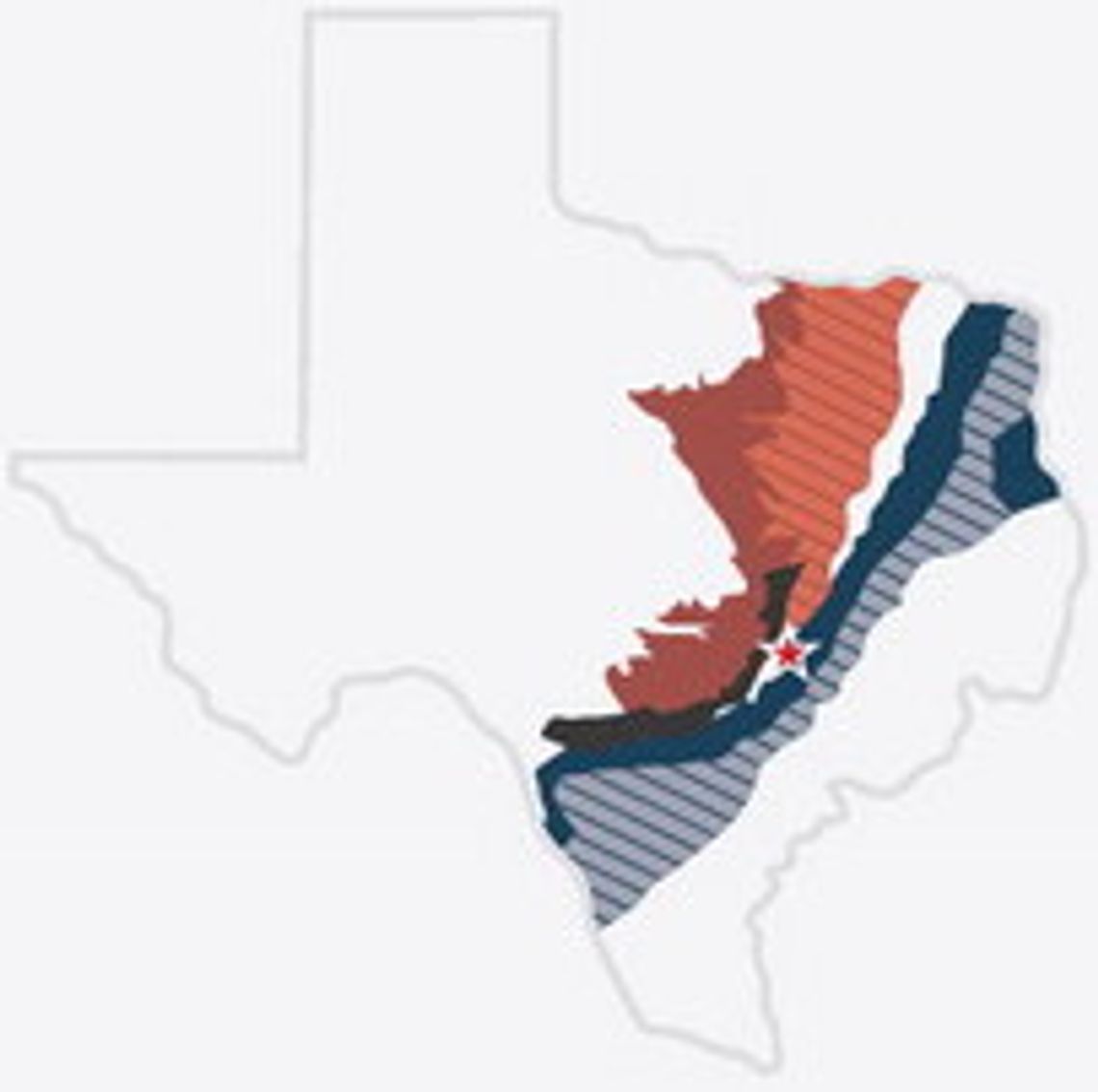Thanks to dry conditions, there’s a perfect storm brewing in Williamson County and no matter which way the winds blow, there are implications for all when it comes to having plentiful water.
Historical drought coupled with unprecedented growth have created a scenario where the demand for water could soon be greater than its supply. There’s no better example of this than in the city of Taylor.
When Samsung Austin Semiconductor goes online in 2024 it will require a huge amount of water for its operations. Add to that the dozens of new developments, additional water restrictions and water rate increases, and you have many frustrated residents asking, “Where is all this water going to come from?”
WATER RESTRICTIONS
The hottest July on record in the U.S. has taken its toll on Central Texas.
According to the U.S. Drought Monitor, Taylor — along with every other city in Williamson County — is experiencing severe drought.
Round Rock has implemented Stage 1 restrictions; Hutto, Stage 2 and the most severe restrictions are in Georgetown at Stage 3.
Manville Water Supply Corp. also issued mandatory Stage 3 restrictions to all customers, some of whom live in the Taylor city limits.
Taylor has been under Stage 1 restrictions since 2022 and says it’s getting close to Stage 2.
Under Stage 1, customers voluntarily water their properties with street addresses ending in even numbers on Sundays and Thursdays, and Saturdays and Wednesdays for odd-numbered locales. Irrigation is requested from 8 p.m. to midnight, and midnight to 10 a.m. Stage 2 kicks in with “moderate” water shortages.
The city takes its drought cues from the Brazos River Authority. The company supplies Taylor with water from nearby Granger Lake that’s clean and ready to drink.
The BRA Drought Contingency Plan triggers a Stage 1 Drought Watch Condition when the Granger Lake reservoir reaches an elevation of 501.8 feet mean sea level. When the reservoir drops to an elevation of 498.4, a Stage 2 warning is issued.
At press time, the lake is 84% full or missing 16% of its water depending on how you look at it. That may not sound like a lot, but online fishing forums put it more succinctly when they announce, “The lake is getting low.”
Now, add to all of this the needs of the 6-million-square-foot, $17 billion fabrication facility Samsung is building in the middle of a cornfield.
SAMSUNG’S ALLOCATION
Right now, Taylor is supplying Samsung with all its water until the company’s own, separate water line is completed sometime next year.
According to the water-delivery schedule between Samsung and the city, the biggest shipment of water will take place during the first quarter of 2024 at some 4.63 million gallons per day.
The amount goes down after that and ends up resting at just under 1 million gallons a day through the life of the agreement.
In return, Samsung will pay for its usage. The city estimates that amount to be $3.7 million in Fiscal Year 2024 for both water costs and wastewater treatment.
Samsung publicly announced in November 2021 it was building a foundry in southwest Taylor.
When the terms of the agreement were announced, residents turned out in droves to public hearings, voicing concerns the deal would lead to a lack of water and higher rates, despite Samsung’s contribution.
Fast forward to the last two fiscal years of water-rate increases totaling 18% and those protests look more like prophecy.
In FY 2023, there was a 10% increase in water rates and in FY 2024 there will be another 8% increase.
City officials maintain Samsung has nothing to do with the hike and the 2024 rates are due to much-needed repairs to the city’s infrastructure. Existing systems are decades old and many of the pipes are undersized by today’s standards and don’t meet the demands of new customers, let alone existing ones.
Stacey Osborne, a Taylor spokeswoman, puts it this way: “The rates, which were recommended in a utility-rate study we commissioned, would increase even if Samsung was not located in the city of Taylor. Any infrastructure associated with the Samsung property was negotiated and included in the contract with Samsung, which is available on the city’s website. The Samsung property does affect the overall utility fund, which includes both revenues and expenditures, and is different from the utility rate.”
At a July 13 City Council meeting, when the new rates were first announced, Chief Financial Officer Jeff Wood said that both “expenditures and revenues are up because of Samsung.”
“Our wholesale prices go up or we had to buy more water to meet the demand.” Wood said.
The tech giant’s water needs are no drop in the bucket. In addition to the millions of gallons of water Taylor is providing, the plant also needs an additional 15 million (estimated) gallons of ultra-pure water a day for industrial operations.
To put that number into context, the average person uses 80 gallons a day.
CARRIZO-WILCOX AQUIFER
Samsung will get that water from EPCOR Utilities, a Canada-based utility provider supplying the resource from the Carrizo-Wilcox Aquifer in Milam County. EPCOR will purify it to the point where it’s not recommended for human consumption (lacking electrolytes) and then pump it to Taylor.
The aquifer is huge. It spans 175,000 square miles and runs from the southern edge of Texas northeast into parts of Louisiana and Arkansas. It supplies water, in all or in part, to 66 counties.
EPCOR already owns a massive pipeline pulling from the Carrizo-Wilcox called the Vista Ridge Project, which is pumping some 56,000-acre feet of water a year to a thirsty San Antonio, a metropolis of more than 1.4 million people.
An acre-foot is a sheet of water 1 acre in area and 1-foot deep, or about 326,000 gallons.
State records show the average annual recharge of the aquifer in Milam County is 25,500-acre feet per year. That means Vista Ridge is already drawing down the aquifer before Samsung even starts pumping.
Over pumping of Carrizo-Wilcox is a big concern. According to residents in the Winter Garden District, which includes Atascosa, Dimmit, Frio, LaSalle and Zavala counties, water levels in that region have dropped dramatically.
In response, several communities have banded together to resist further pumping.
Other states along the aquifer are experiencing similar problems. In some areas, it’s left up to ranchers and farmers to pick up the slack by implementing tough new water rules that replace decades-old regulations that have left them dry.
There are two schools of thought: Either the aquifer is not recharging like it used to or increased demand is testing its outer limits.
Either way, Samsung plans to reduce some of that strain by way of reclamation. According to marketing materials, the company plans on recycling “75% of its ultra-pure wastewater and returning the balance back to the environment.”
BLUE SKY
EPCOR will head those efforts at its Blue Sky Water Reclamation Facility in Taylor. Not much is known about the specifics of those recycling efforts, and inquiries to EPCOR went unanswered.
The company did send a link to a press release about its deal with Samsung, which said this: “Blue Sky will receive and purify water from the fabrication facility using the most advanced and proven treatment technologies and processes available in the market.”
Samsung’s Austin campus, established in the 1990s, didn’t shed much light either.
It’s a smaller facility but does the same kinds of manufacturing and recycling. Facilities Director Zac Rosenbaum said this in a prepared release: “A few years ago, we implemented a copper ion exchange treatment process, the previous process required a large amount of chemicals and the solids generated to treat that copper had to be sent to a landfill. Copper ion exchange uses a media to capture the copper, which can then be used for an inlet product for another company. As part of our sustainability efforts, our vision is that every waste stream would find a beneficial reuse rather than ending up in a landfill or incineration. Copper recovery via ion exchange technology is an example of that approach.”
Austin honored Samsung with an award for that technology. In an ironic twist, however, it happened around the same time the company discovered two separate “acidic wastewater” spills that affected surrounding tributaries. Samsung responded by adding sodium bicarbonate (baking soda) to the water and subsequent testing shows PH levels have returned to normal. In an ironic twist however, in a memo penned by the Watershed Protection Department to the city of Austin, those on the scene found “no living wildlife” near the spill at Harris Branch Creek.
The system may not be perfect, but supporters say at least they’re trying.
The semiconductor industry accounts for over 30% of global greenhouse emissions.
And in a state that’s seeing the worst drought in 12 years at a cost of $36 billion so far to the agriculture industry alone, finding an extra 15 to 20 million gallons of water a day begins to take on new meaning — every drop counts.








Comment
Comments